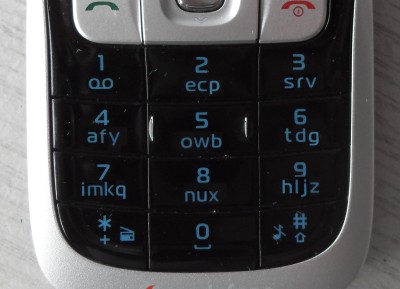The Sheeky Keypad
A New Keypad For Text Messaging
Current mobile phone designs set the keys in alphabetical order which is nonsensical and inefficient. It makes typing many English words slow and awkward and common letters like S and O need too many key presses. I decided to design a new keypad based on English letter frequency.
Factors
Some letters and letter combinations are more common in text messages than in written English, such as x and abbreviations like OMG and LOL. Letters commonly placed in succession should be on different keys. Letters placed in negative succession should also be placed on different keys because pressing a second letter then a first takes just as much time when writing a text. Common letters should appear near the top of the keypad because lower keys are harder to press with one thumb.
Development
I began with ETAOIN SHRDLU letter frequency. The first draft was ECP, TDV, AFY, OWB, IMG, NHK, SRXQ, ULTZ. Then I switched H and U because although U is a vowel it is much less common than H. Then I wanted to move R up the keypad because it's very commonly placed with E, and darting between those keys would be made easier if the keys were higher, however of the first letters already set R is most rarely placed near S so I needed to move S at the same time. These were switched with TD on key 3. Then I needed to move T, one of the most popular letters in English to move that away from the more awkward lower keys. Then I switched IM and NU because I is slightly more common and so easier to access for right handed users, also UK or MX would be slightly more common combinations than MK and UX, as many "uck" words are abbreviated to "uk" in text messages. Then Q was moved to a different key from the U, also preserving the symmetry of having four letters on the 7 and 9 keys.
The final layout is:
ECP, SRV, AFY, OWB, TDG, IMKQ, NUX, HLJZ

 Books
Books
 Poetry/Lyrics
Poetry/Lyrics
 Essays
Essays
